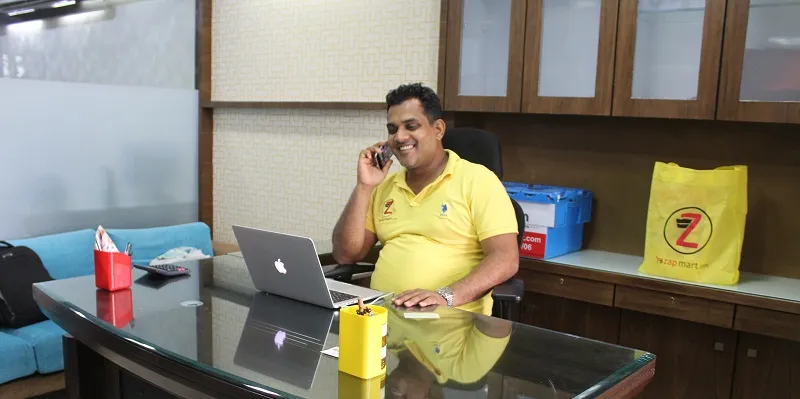South Mumbai’s Zapmart dreams big, wants to go national
The online grocery business in India has been one of the most difficult roads to take. At one time, there was a sudden spurt in the number of such businesses, with roughly 15 of them coming up, but the industry’s downfall has been just as unexpected. With a big name like PepperTap recently shutting down, the only real biggie remaining is Bigbasket, which has enough financial muscle, through the funds it has raised, to go on for at least two more years. The only other well-known names are ZopNow, Grofers, and Jugnoo.
According to data available with YourStory, a total of $120 million was raised last year. Online grocery companies followed the inventory model and they realised that warehouse rents, competition from kirana stores, and heavy discounting had run their businesses out of cash. Therefore the idea of technology as an enabler was brilliant, but the execution was poor. But who says you cannot have people starting something new, especially when they have learned from the mistakes of the previous model? Zapmart was born in Mumbai in August 2015 just as a popular online grocery business—LocalBanya—was shutting shop.

The idea and the business
From a real estate background, Parvez Siddiqui was a loyal LocalBanya customer who gave a thought to more than just his purchases, soon realising why online grocery businesses fail so regularly. Being from an operations background, Parvez knew how not to play the inventory game, which was why he decided that it would be far better to aggregate kirana stores across Mumbai to make a business viable. “I became completely engrossed in the concept and its working. I wanted to make it better. That is when I started working on the idea, in 2015,” says Parvez, the founder of Zapmart. He quickly went about employing web developers to make the website and the backend applications to run the company.
The initial days were hard. The work that was assigned to developers never got done by December 2015. “The other major issue I faced was that nobody wanted to work in a startup,” says Parvez. He ended up burning his fingers with his team, so he outsourced the web development to an agency and began to focus on employing an operations team. While the website was being prepared, he began to build relationships with several kirana stores in his neighbourhood—Colaba, South Mumbai—for a pilot. He began to train them in using Zapmart’s packaging and service standards. With initial success in Colaba, over the last six months, Parvez has scaled the programme across Mumbai. In Colaba, deliveries are made by Zapmart’s own delivery boys, whereas in other areas of the city, deliveries are made by kirana stores with Zapmart’s branding. Today there are 20-odd stores that are part of Zapmart’s network.
“The zero-inventory model is bringing in some traction and I hope to increase the reach in Mumbai before going national,” says Parvez. He adds that customers can choose the catalogue by region, which allows them to connect better with the kirana through Zapmart. The initial cost of onboarding is high because photographs of the inventory in each kirana have to be shot. After this, the orders received by Zapmart are beamed back to the kirana owner’s mobile, telling him to pack the products. Today, the kirana can receive information via either a regular SMS or as a message on a chat app. “We also call our kiranas and inform them on what to pack,” says Parvez. He adds that only through technology can this business be scaled up.
The challenges
“It takes a lot of training to get kiranas to work on technology, but since everyone uses smartphones, we will work on building a merchant side business too,” he says. The company wants deliveries to be spot on, and has got it right in South Mumbai, where it manages its own deliveries.
The business model is to take a cut from the kirana. Parvez has invested close to $150,000 of his own money on the business. He believes that the model works because it puts the kirana and the consumer at the centre of the business. Zapmart’s revenue for the last six months is very small—only about Rs 5 lakh a month—but is growing as the company adds more kiranas to their fold.
“Keeping costs low is crucial in this industry, otherwise it is not going to work,” says R Natarajan, CFO of Helion Ventures.
The last five years have told us that the online grocery business has repeatedly lost out to kiranas. Will Zapmart work? Its future depends entirely on the humble kiranas becoming tech-savvy. Until this happens, it is going to be a tough road for Parvez and his 15-member team.
Website: Zapmart







